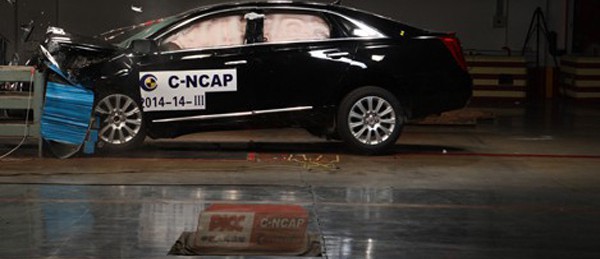In this article, we will not name any manufacturer, even the image used does not suggest any player currently in the business here in India. Still, we know you are smart enough to get the point.
So starting with the recent crash test reports which revealed startling results of one of the most successful hatchback on Indian soil, and of another new entrant in the entry level segment. Crash test result for both the products – 0. Now is this so hard to accept? The car did not fare well and demands more work to be done; why does this involve the famous passing the parcel game where all blame one thing or the other.
Where one of the cars tested might be big on volumes, the other one is just trying to create a mark here in the Indian segment. Previously, a couple of more cars were tested and results weren’t all good. But this time, it has created quite a buzz in the market; and you know why.
Apart from manufacturers denying results by claiming that the crash test reports are not suitable for Indian conditions; a couple of more articles have emerged on the internet from well known personalities backing this claim. Do you think the customers are so blinded that they will believe all that you say and sell?
Why is it that the same model built abroad fares well and the Indian models fail miserably. Now some gurus might comment that it is because of the additional features like ABS and Airbags, but what about the structural strength? And what do manufacturers claim by saying conditions here are different? Yes, the overall driving culture in India is a bit messy, agreed, but a crash is a crash; and how the car prevents situations from getting worse are more or less the same across borders.
In fact, here in India, there are more erratic lane changes, over speeding, faulty indicator methods etc. being used which should rather account for a much safer car. Even the infrastructure is so poor that a given car should be able to protect the occupants during an accident.
The crash tests which were conducted included a 64 kmph frontal impact. Now manufacturers said this is rule not suitable for India. Why? Don’t the cars which failed these tests achieve that kind of speeds? Quite more actually, more by almost a 100 kmph. The new rule which has emerged out of this situation is that the new cars will have to face a 56 kmph crash test. Fair enough, but does 8 kmph slower change the results from 0 to 5? We don’t think so.
Due to the involvement of big names, the automobile lobby will work hard to press this situation. The news has reached a vast number of people and now the companies think that living in denial is sufficient. Why not accept the flaws, and promise better safety going forward?
You will read a number of reports being shared in the next few days or weeks about each of these cars being suitable for Indian conditions. We don’t understand how and why. Is the Indian car buyers life so cheap? Or are steps being taken that cars don’t reach speeds of more than 50 kmph?
Our opinion is that this whole lobby, rather than trying to re-invent the wheel by making new rules to escape situations should rather accept the Global NCAP requirements and work in a much safer direction.
On one hand we are promoting ‘Make in India’, to meet global standards. And on the other side, want to make India an exception for sub-par quality standards.
Yes we want more value for more, but is it too much to value our own life?
THINK!


